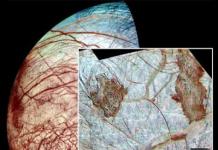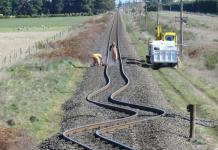Introduction
Earthquakes are tremors and vibrations of the Earth's surface caused by natural causes (mainly tectonic processes), or (sometimes) artificial processes (explosions, filling of reservoirs, collapse of underground cavities in mine workings). Small tremors can also be caused by the rise of lava during volcanic eruptions. In other words, vibrations of the Earth caused by sudden changes in the condition of the planet's interior. These vibrations are elastic waves propagating at high speed through the rock mass. The most powerful earthquakes are sometimes felt at distances of more than 1,500 km from the source and can be recorded by seismographs (special highly sensitive instruments). The area where vibrations originate is called the earthquake source, and its projection onto the Earth's surface is called the earthquake epicenter. The sources of most earthquakes lie in the earth's crust at depths of no more than 16 km, but in some areas the depths of the sources reach 700 km.
About a million earthquakes occur throughout the Earth each year, but most are so small that they go unnoticed. Really strong earthquakes, capable of causing widespread destruction, occur on the planet about once every two weeks. Most of them fall on the bottom of the oceans, and therefore are not accompanied by catastrophic consequences (if an earthquake under the ocean does not occur without a tsunami).
Types of earthquakes
Tectonic earthquakes occur as a result of a sudden release of stress, for example, during movement along a fault in the earth's crust (research in recent years shows that deep earthquakes can also be caused by phase transitions in the Earth's mantle that occur at certain temperatures and pressures). Sometimes deep faults come to the surface. During the catastrophic earthquake in San Francisco on April 18, 1906, the total length of surface ruptures in the San Andreas fault zone was more than 430 km, the maximum horizontal displacement was 6 m. The maximum recorded value of seismogenic displacements along the fault was 15 m.
Volcanic earthquakes occur as a result of sudden movements of magmatic melt in the bowels of the Earth or as a result of the occurrence of ruptures under the influence of these movements.
Man-made earthquakes can be caused by underground nuclear tests, filling reservoirs, oil and gas production by injecting liquid into wells, blasting during mining, etc. Less powerful earthquakes occur when cave vaults or mine workings collapse.
Causes of earthquakes
Any earthquake is an instant release of energy due to the formation of a rock rupture that occurs in a certain volume called the earthquake focus, the boundaries of which cannot be defined strictly enough and depend on the structure and stress-strain state of the rocks in a given location. Deformation that occurs abruptly emits elastic waves. The volume of deformed rocks plays an important role in determining the strength of the seismic shock and the energy released.
Large spaces of the Earth's crust or upper mantle, in which ruptures occur and inelastic tectonic deformations occur, give rise to strong earthquakes: the smaller the volume of the source, the weaker the seismic tremors. The hypocenter, or focus, of an earthquake is the conditional center of the source at depth, and the epicenter is the projection of the hypocenter onto the Earth's surface. The zone of strong vibrations and significant destruction on the surface during an earthquake is called the pleistoseist region.
Based on the depth of the hypocenters, earthquakes are divided into three types: 1) shallow-focus (0-70 km), 2) medium-focus (70-300 km), 3) deep-focus (300-700 km). Most often, earthquake foci are concentrated in the earth's crust at a depth of 10-30 km. As a rule, the main underground seismic shock is preceded by local tremors - foreshocks. Seismic tremors that occur after the main shock are called aftershocks. Aftershocks that occur over a significant period of time contribute to the release of stress in the source and the emergence of new ruptures in the thickness of the rocks surrounding the source.
The source of an earthquake is characterized by the intensity of the seismic effect, expressed in points and magnitude. In Russia, the 12-point Medvedev-Sponheuer-Karnik intensity scale (MSK-64) is used. According to this scale, the following gradation of earthquake intensity is adopted: I-III points - weak, IV-V - noticeable, VI-VII - strong (dilapidated buildings are destroyed), VIII - destructive (strong buildings are partially destroyed, factory chimneys fall), IX - devastating (most buildings are destroyed), X - destructive (bridges are destroyed, landslides and collapses occur), XI - catastrophic (all structures are destroyed, the landscape changes), XII - disastrous disasters (cause changes in the terrain over a vast territory). The magnitude of an earthquake according to Charles F. Richter is defined as the decimal logarithm of the ratio of the maximum amplitudes of seismic waves of a given earthquake (A) to the amplitude of the same waves of some standard earthquake (Ax). The larger the wave span, the correspondingly greater the ground displacement:
Magnitude 0 means an earthquake with a maximum amplitude of 1 μm at an epicentral distance of 100 km. At a magnitude of 5, minor damage to buildings is observed. The devastating tremor has a magnitude of 7. The strongest recorded earthquakes reach magnitudes of 8.5-8.9 on the Richter scale. Currently, earthquake assessment in magnitude is used more often than in points.
Lines connecting points with the same intensity of vibrations are called isoseists. At the epicenter of an earthquake, the Earth's surface experiences mainly vertical vibrations. As you move away from the epicenter, the role of the horizontal component of the oscillations increases.
Energy released during earthquakes
E = p2rV (a / T),
where V is the speed of propagation of seismic waves,
r - density of the upper layers of the Earth,
a is the displacement amplitude,
T - period of oscillation. The source material for energy calculations is seismogram data. B. Gutenberg, like Charles Richter, who worked at the California Institute of Technology, proposed a connection between the energy of an earthquake and its magnitude on the Richter scale:
log E = 9.9 + 1.9M - 0.024M 2.
This formula shows a colossal increase in energy with increasing earthquake magnitude. The energy of earthquakes is several million times higher than the energy of a standard atomic bomb. For example, during the Ashgabat earthquake in 1948, 1023 ergs of energy were released, during the Khait earthquake in Tajikistan in 1949 - 5 "1024 ergs, in 1960 in Chile - 1025 ergs. Around the globe, on average, about 0.5 ergs are released per year due to earthquakes "1026 ergs of energy.
An important concept in seismology is specific seismic power, that is, the amount of energy released per unit volume, for example 1 m 3, per unit time 1 s. Seismic waves, formed during instantaneous deformation in the foci of earthquakes, produce the main destructive work on the Earth's surface. There are three main types of elastic waves that create seismic vibrations that are felt by people and cause destruction: volumetric longitudinal (P-waves) and transverse (S-waves), as well as surface waves.
The earth's firmament has always been a symbol of security. And today a person who is afraid of flying on an airplane feels protected only when he feels a flat surface under his feet. Therefore, the worst thing is when the ground literally disappears from under your feet. Earthquakes, even the weakest ones, undermine the sense of security so much that many of the consequences are associated not with destruction, but with panic and are psychological rather than physical in nature. In addition, this is one of those disasters that humanity cannot prevent, and therefore many scientists are researching the causes of earthquakes, developing methods for recording tremors, forecasting and warning. The amount of knowledge already accumulated by humanity on this issue allows us to minimize losses in some cases. At the same time, examples of earthquakes in recent years clearly indicate that there is still much to be learned and done.
The essence of the phenomenon
At the heart of every earthquake is a seismic wave that leads to it. It arises as a result of powerful processes of varying depth. Quite minor earthquakes occur due to surface drift, often along faults. The causes of earthquakes that are deeper in location often have devastating consequences. They flow in zones along the edges of shifting plates that are plunging into the mantle. The processes occurring here lead to the most noticeable consequences.
Earthquakes happen every day, but most of them go unnoticed by people. They are only recorded with special devices. In this case, the greatest force of tremors and maximum destruction occur in the zone of the epicenter, the place above the source that generated the seismic waves.
Scales
Today there are several ways to determine the strength of a phenomenon. They are based on concepts such as the intensity of the earthquake, its energy class and magnitude. The last of these is a quantity that characterizes the amount of energy released in the form of seismic waves. This method of measuring the strength of a phenomenon was proposed in 1935 by Richter and is therefore popularly called the Richter scale. It is still used today, but, contrary to popular belief, each earthquake is assigned not points, but a certain magnitude value.
Earthquake scores, which are always given in the description of the consequences, are related to a different scale. It is based on a change in the amplitude of the wave, or the magnitude of the oscillations at the epicenter. The values on this scale also describe the intensity of earthquakes:
- 1-2 points: fairly weak tremors, recorded only by instruments;
- 3-4 points: noticeable in high-rise buildings, often noticeable by the swinging of a chandelier and the displacement of small objects, a person may feel dizzy;
- 5-7 points: tremors can be felt already on the ground, cracks may appear on the walls of buildings, plaster may fall off;
- 8 points: powerful tremors lead to deep cracks in the ground and noticeable damage to buildings;
- 9 points: walls of houses, often underground structures, are destroyed;
- 10-11 points: such an earthquake leads to collapses and landslides, collapse of buildings and bridges;
- 12 points: leads to the most catastrophic consequences, including severe changes in the landscape and even the direction of water movement in rivers.
Earthquake scores, which are given in various sources, are determined precisely on this scale.
Classification
The ability to predict any disaster comes from a clear understanding of what causes it. The main causes of earthquakes can be divided into two large groups: natural and artificial. The former are associated with changes in the subsoil, as well as with the influence of certain cosmic processes, the latter are caused by human activity. The classification of earthquakes is based on the cause that caused it. Among natural ones, tectonic, landslide, volcanic and others are distinguished. Let's look at them in more detail.
Tectonic earthquakes
The crust of our planet is constantly in motion. This is what underlies most earthquakes. The tectonic plates that make up the crust move relative to each other, collide, diverge and converge. In places of faults, where plate boundaries pass and a compression or tension force occurs, tectonic stress accumulates. As it grows, sooner or later it leads to the destruction and displacement of rocks, as a result of which seismic waves are born.
Vertical movements lead to the formation of failures or uplifting of rocks. Moreover, the displacement of the plates can be insignificant and amount to only a few centimeters, but the amount of energy released in this case is enough to cause serious destruction on the surface. Traces of such processes on earth are very noticeable. These could be, for example, displacements of one part of the field relative to another, deep cracks and failures.

Under the water column
The causes of earthquakes on the ocean floor are the same as on land - movements of lithospheric plates. Their consequences for people are somewhat different. Very often, the displacement of oceanic plates causes a tsunami. Having originated above the epicenter, the wave gradually gains height and often reaches ten meters, and sometimes fifty, near the shore.
According to statistics, over 80% of tsunamis hit the shores of the Pacific Ocean. Today, there are many services in seismic zones working to predict the occurrence and spread of destructive waves and notifying the population of the danger. However, people still have little protection from such natural disasters. Examples of earthquakes and tsunamis at the beginning of our century are further confirmation of this.

Volcanoes
When it comes to earthquakes, images of an eruption of hot magma that you once saw inevitably appear in your head. And this is not surprising: the two natural phenomena are interconnected. The cause of the earthquake may be volcanic activity. The contents of the fire mountains exert pressure on the surface of the earth. During the sometimes quite long period of preparation for an eruption, periodic explosions of gas and steam occur, which generate seismic waves. The pressure on the surface creates a so-called volcanic tremor (shaking). It consists of a series of small ground tremors.
Earthquakes are caused by processes occurring in the depths of both active and extinct volcanoes. In the latter case, they are a sign that the frozen mountain of fire may still wake up. Volcanic researchers often use microearthquakes to predict eruptions.
In many cases, it can be difficult to unambiguously classify an earthquake as tectonic or volcanic. Signs of the latter are the location of the epicenter in close proximity to the volcano and a relatively small magnitude.

Collapses
An earthquake can also be caused by rock collapse. in the mountains arise as a result of both various processes in the subsoil and natural phenomena, and human activity. Voids and caves in the ground can collapse and generate seismic waves. Rock falls are caused by insufficient drainage of water, which destroys seemingly solid structures. The collapse could also be caused by a tectonic earthquake. The collapse of an impressive mass causes minor seismic activity.
Such earthquakes are characterized by low strength. Typically, the volume of collapsed rock is not sufficient to cause significant fluctuations. However, sometimes earthquakes of this type lead to noticeable damage.

Classification by depth of occurrence
The main causes of earthquakes are associated, as already mentioned, with various processes in the bowels of the planet. One of the options for classifying such phenomena is based on the depth of their origin. Earthquakes are divided into three types:
- Surface - the source is located at a depth of no more than 100 km; approximately 51% of earthquakes belong to this type.
- Intermediate - depth varies in the range from 100 to 300 km; the sources of 36% of earthquakes are located in this segment.
- Deep-focus - below 300 km, this type accounts for about 13% of such disasters.
The most significant offshore earthquake of the third type occurred in Indonesia in 1996. Its source was located at a depth of over 600 km. This event allowed scientists to “enlighten” the planet’s interior to a considerable depth. In order to study the structure of the subsoil, almost all deep-focus earthquakes that are not dangerous to humans are used. Much of the data on the structure of the Earth was obtained from the study of the so-called Wadati-Benioff zone, which can be represented as a curved inclined line indicating the place where one tectonic plate sets under another.

Anthropogenic factor
The nature of earthquakes has changed somewhat since the beginning of the development of human technical knowledge. In addition to natural causes that cause tremors and seismic waves, artificial ones also appeared. Man, mastering nature and its resources, as well as increasing technical power, through his activities can provoke a natural disaster. The causes of earthquakes are underground explosions, the creation of large reservoirs, and the production of large volumes of oil and gas, which result in voids underground.
One of the rather serious problems in this regard is earthquakes that occur due to the creation and filling of reservoirs. Huge volumes and masses of water exert pressure on the subsoil and lead to changes in the hydrostatic equilibrium in the rocks. Moreover, the higher the dam created, the greater the likelihood of the occurrence of so-called induced seismic activity.
In places where earthquakes occur due to natural causes, human activity often overlaps with tectonic processes and provokes natural disasters. Such data imposes a certain responsibility on companies involved in the development of oil and gas fields.

Consequences
Strong earthquakes cause great destruction over large areas. The catastrophic nature of the consequences decreases with distance from the epicenter. The most dangerous results of destruction are various Collapse or deformation of production facilities associated with hazardous chemicals, leading to their release into the environment. The same can be said about burial grounds and nuclear waste disposal sites. Seismic activity can cause contamination of vast areas.
In addition to numerous destructions in cities, earthquakes have consequences of a different nature. Seismic waves, as already noted, can cause landslides, mudflows, floods and tsunamis. After a natural disaster, earthquake zones often change beyond recognition. Deep cracks and failures, soil washout - these and other “transformations” of the landscape lead to significant environmental changes. They can lead to the death of the flora and fauna of the area. This is facilitated by various gases and metal compounds coming from deep faults, and simply by the destruction of entire sections of the habitat.
Strong and weak
The most impressive destruction remains after megaearthquakes. They are characterized by a magnitude greater than 8.5. Such disasters are fortunately extremely rare. As a result of similar earthquakes in the distant past, some lakes and river beds were formed. A picturesque example of the “activity” of a natural disaster is Lake Gek-Gol in Azerbaijan.
Weak earthquakes are a hidden threat. As a rule, it is very difficult to find out about the likelihood of their occurrence on the ground, while phenomena of more impressive magnitude always leave identification marks. Therefore, all industrial and residential facilities near seismically active zones are under threat. Such buildings include, for example, many nuclear power plants and power plants in the United States, as well as disposal sites for radioactive and toxic waste.

Earthquake areas
The uneven distribution of seismically dangerous zones on the world map is also associated with the peculiarities of the causes of natural disasters. In the Pacific Ocean there is a seismic belt, with which, one way or another, an impressive part of earthquakes is associated. It includes Indonesia, the west coast of Central and South America, Japan, Iceland, Kamchatka, Hawaii, the Philippines, the Kuril Islands and Alaska. The second most active belt is the Eurasian one: the Pyrenees, the Caucasus, Tibet, the Apennines, the Himalayas, Altai, the Pamirs and the Balkans.
The earthquake map is full of other potential danger zones. All of them are associated with places of tectonic activity, where there is a high probability of collision of lithospheric plates, or with volcanoes.
The Russian earthquake map is also full of a sufficient number of potential and active sources. The most dangerous zones in this sense are Kamchatka, Eastern Siberia, the Caucasus, Altai, Sakhalin and the Kuril Islands. The most destructive earthquake in recent years in our country occurred on Sakhalin Island in 1995. Then the intensity of the natural disaster was almost eight points. The disaster led to the destruction of a large part of Neftegorsk.
The enormous danger of a natural disaster and the impossibility of preventing it forces scientists around the world to study earthquakes in detail: the causes and consequences, “identifying” signs and forecasting possibilities. It is interesting that technical progress, on the one hand, helps to more accurately predict threatening events, to detect the slightest changes in the internal processes of the Earth, and on the other hand, it also becomes a source of additional danger: accidents at hydroelectric and nuclear power plants, in mining sites, are added to surface faults. fires at work that are terrible in scale. The earthquake itself is a phenomenon as controversial as scientific and technological progress: it is destructive and dangerous, but it indicates that the planet is alive. According to scientists, a complete cessation of volcanic activity and earthquakes will mean the death of the planet in geological terms. The differentiation of the interior will be completed, the fuel that has been warming the interior of the Earth for several million years will run out. And it is still unclear whether there will be a place for people on the planet without earthquakes.
Landslide earthquakes
Earthquakes can also be caused by landslides and large landslides. Such earthquakes are called landslides; they are local in nature and of low strength.
Earthquakes of artificial nature
An earthquake can also be caused artificially: for example, by the explosion of a large amount of explosives or by an underground nuclear explosion (tectonic weapon). Such earthquakes depend on the amount of material exploded. For example, when the DPRK tested a nuclear bomb in 2006, a moderate earthquake occurred, which was recorded in many countries.
Symptoms: Earthquake usually occurs late at night
or at dawn and begins with a slight shaking of the ground, accompanied by
strong underground rumble.
Following this, sometimes rapidly, a series of strong shocks arise that can
cause a volcanic eruption, rockfall and even ruptures of the earth's surface.
Plots of land can rise and fall, causing, in turn,
landslides and tsunamis are giant tidal waves that suddenly hit coastal areas (they are also called seismic waves).
And finally, in the final stage of the earthquake, there is a decrease in the strength of vibration (due to which many begin to feel very unwell and “sea sickness on land.”
Dangerous and harmful factors of earthquakes:
As a result of exposure to damaging factors, zones are formed that are dangerous to the safety of human life and affect the sustainability of the functioning of vital objects. Foci of damage may occur within the zone. Earthquakes are best known for the devastation they can cause. The cause of an earthquake is the rapid displacement of a section of the earth's crust as a whole at the moment of plastic (brittle) deformation of elastically stressed rocks at the source of the earthquake. Most earthquakes occur near the Earth's surface. The displacement itself occurs under the action of elastic forces during the discharge process - reducing elastic deformations in the volume of the entire section of the slab and shifting to the equilibrium position. An earthquake is a rapid (on a geological scale) transition of potential energy accumulated in elastically deformed (compressed, sheared or stretched) rocks of the earth's interior into the energy of vibrations of these rocks (seismic waves), into the energy of changes in the structure of rocks at the source of the earthquake. This transition occurs when the tensile strength of the rocks at the source of the earthquake is exceeded.
2 Study of earthquakes
Scientific geology (its formation dates back to the 18th century) made the correct conclusion that mainly young areas of the earth’s crust are shaking. In the second half of the 19th century, a general theory was already developed, according to which the earth's crust was divided into ancient stable shields and young, mobile mountain ranges. It turned out that young mountain systems - the Alps, Pyrenees, Carpathians, Himalayas, Andes - are susceptible to strong earthquakes, while ancient shields are areas where strong earthquakes are absent. The information obtained from recording earthquakes is very important for science, it provides information both about the source of the earthquake and about the structure of the earth’s crust in certain areas and the Earth as a whole. About 20 minutes after a strong earthquake, seismologists around the globe learn about it. This requires neither radio nor telegraph.
How does this happen? During an earthquake, rock particles move and vibrate. They push and vibrate neighboring particles, which transmit vibrations even further in the form of an elastic wave.
Thus, the shock is, as it were, transmitted along a chain and diverges in the form of elastic waves in all directions. Gradually, as it moves away from the source of the earthquake, the wave weakens.
It is known, for example, that elastic waves are transmitted along the rails far ahead of a speeding train, filling them with an even, barely audible hum. Elastic waves that occur during an earthquake are called seismic. They are recorded by seismographs at seismic stations around the globe. Seismic waves traveling from the source of an earthquake to seismic stations pass through layers of the Earth that are inaccessible for direct observation. The characteristics of recorded seismic waves - the time of their appearance, amplitude, oscillation period and other parameters - make it possible to determine the position of the earthquake epicenter, its magnitude, and possible strength in points. Seismic waves also carry information about the structure of the Earth. Deciphering a seismogram is like reading the seismic waves' story about what they encountered deep within the Earth. This is a difficult but exciting task. During an earthquake, very long surface seismic waves propagate along the Earth's surface, as well as along the oceans, with periods ranging from several seconds to several minutes. These waves circle the Earth several times. Spreading from the epicenter towards each other, they cause the entire globe as a whole to vibrate. The globe begins to “sound” like a giant bell when it is struck, and such a blow to the Earth is a strong earthquake. In recent years, it has been established that the fundamental tone of such a sound (oscillation) has a period of about one hour and is recorded by particularly sensitive equipment. These data, through complex calculations on an electronic computer, make it possible to draw conclusions about the physical properties of our planet and determine the structure of the Earth’s shell or mantle at a depth of hundreds of kilometers.
A special device, a seismograph, that detects earthquakes, uses the property of inertia. The main part of the seismograph - the pendulum - is a weight suspended on a spring from a tripod. When the soil vibrates, the seismograph's pendulum lags behind its movement. If you attach a needle to the pendulum and press smoked glass against it so that the needle only touches its surface, you will get the simplest seismograph that has been used before. The soil, and with it the tripod and glass plate, vibrate, the pendulum and the needle remain motionless due to inertia. On the sooty surface, the needle will draw a curve of vibration of the Earth's surface at a given point.
If, instead of a needle, a mirror is attached to the pendulum and a beam of light is directed at it, then the reflected beam - a “bunny” - will reproduce the vibrations of the soil in an enlarged form. Such a “bunny” is directed onto a uniformly moving ribbon of photographic paper; after development, on this tape you can see the recorded vibrations - a curve of the Earth's vibrations over time - a seismogram.
The intensity or strength of earthquakes is characterized both by points (a measure of destruction) and by the concept of magnitude (released energy). In Russia, a 12-point earthquake intensity scale MSK - 64, compiled by S.V. Medvedev, V. Sponheuer and V. Karnik, is used.
According to this scale, the following gradation of intensity or strength of earthquakes is accepted:
1–3 points – weak;
4 – 5 points – tangible;
6 – 7 points – strong (dilapidated buildings are destroyed);
8 – destructive (strong buildings and factory pipes are partially destroyed);
9 – devastating (most buildings are destroyed);
10 – destructive (almost all buildings, bridges are destroyed, collapses and landslides occur)
11 – catastrophic (all buildings are destroyed, the landscape changes);
12 – disastrous disasters (complete destruction, change in terrain over a vast area).
Seismologists all over the world use the same definitions in seismology:
a) seismic hazard - the possibility (probability) of seismic impacts of a certain force on the earth’s surface (in points on the seismic intensity scale, vibration amplitudes or accelerations) in a given area during the considered time interval;
b) seismic risk - the calculated probability of social and economic damage from earthquakes in a given area in a given time interval.
A new step in world seismology was made back in 1902 by Academician B.B. Golitsyn, who proposed a method for converting the mechanical vibrations of a seismograph into electrical ones and recording them using mirror galvanometers.
Earthquake model. Types of seismic waves.
Seismic waves are divided into compression waves and shear waves.
· Compression waves, or longitudinal seismic waves, cause vibrations of the rock particles through which they pass along the direction of wave propagation, causing alternation of areas of compression and rarefaction in the rocks. The speed of propagation of compression waves is 1.7 times greater than the speed of shear waves, so seismic stations are the first to record them. Compression waves are also called primary waves (P waves). The speed of the P-wave is equal to the speed of sound in the corresponding rock. At frequencies of P-waves greater than 15 Hz, these waves can be perceived by ear as an underground hum and rumble.
· Shear waves, or transverse seismic waves, cause rock particles to vibrate perpendicular to the direction of propagation of the wave. Shear waves are also called secondary waves (S waves).
There is a third type of elastic waves - long or surface waves (L-waves). They are the ones who cause the most destruction.
3 Statistics on earthquakes.
An earthquake is a natural phenomenon that is not always predictable and can cause enormous damage. Over the past 500 years, about 4.5 million people have died from earthquakes on Earth. International earthquake statistics indicate that in the period from 1947 to 1970. 151 thousand people died, from 1970 to 1976. - 700 thousand people, and from 1979 to 1989 1.5 million people died.
Acid rain is a serious environmental problem caused by environmental pollution. Their frequent appearance frightens not only scientists, but also ordinary people, because such precipitation can have a negative impact on human health. Acid rain is characterized by a low pH level. For normal precipitation, this figure is 5.6, and even a slight violation of the norm is fraught with serious consequences for living organisms caught in the affected area.
With a significant shift, the reduced level of acidity causes the death of fish, amphibians, and insects. Also, in the area where such precipitation is observed, you can notice acid burns on the leaves of trees and the death of some plants.
Negative consequences of acid rain also exist for humans. After a rainstorm, toxic gases accumulate in the atmosphere, and inhaling them is highly discouraged. A short walk in acid rain can cause asthma, heart and lung diseases.
Acid rain: causes and consequences
The problem of acid rain has long been global in nature, and every inhabitant of the planet should think about their contribution to this natural phenomenon. All harmful substances that enter the air during human activity do not disappear anywhere, but remain in the atmosphere and sooner or later return to the earth in the form of precipitation. Moreover, the consequences of acid rain are so serious that it sometimes takes hundreds of years to eliminate them.
In order to find out what the consequences of acid rain can be, you need to understand the very concept of the natural phenomenon in question. So scientists agree that this definition is too narrow to describe the global problem. Only rain cannot be taken into account - acid hail, fog and snow are also carriers of harmful substances, since the processes of their formation are largely identical. In addition, toxic gases or dust clouds may appear during dry weather. They are also a type of acid precipitation.
Causes of acid rain formation
The cause of acid rain lies largely in the human factor. Constant air pollution with acid-forming compounds (sulfur oxides, hydrogen chloride, nitrogen) leads to imbalance. The main “suppliers” of these substances into the atmosphere are large enterprises, in particular those working in the field of metallurgy, processing of oil-containing products, burning coal or fuel oil. Despite the availability of filters and cleaning systems, the level of modern technology still does not allow us to completely eliminate the negative impact of industrial waste.
Acid rain is also associated with an increase in vehicles on the planet. Exhaust gases, although in small proportions, also contain harmful acidic compounds, and in terms of the number of cars, the level of pollution becomes critical. Thermal power plants also contribute, as well as many household items, such as aerosols, cleaning products, etc.
In addition to human influence, acid rain can also occur due to some natural processes. Thus, their appearance is caused by volcanic activity, during which large amounts of sulfur are released. In addition, it produces gaseous compounds during the breakdown of certain organic substances, which also leads to air pollution.
How is acid rain formed?
All harmful substances released into the air react with solar energy, carbon dioxide or water, resulting in acidic compounds. Together with drops of moisture, they rise into the atmosphere and form clouds. As a result, acid rain occurs, snowflakes or hailstones form, which return all absorbed elements to the earth.
In some regions, deviations from the norm of 2-3 units were noticed: the permissible acidity level is 5.6 pH, but in China and the Moscow region there was precipitation with values of 2.15 pH. At the same time, it is quite difficult to predict where exactly acid rain will appear, because the wind can carry the formed clouds quite far from the place of pollution.
Composition of acid rain
The main elements in acid rain are sulfuric and sulfurous acids, as well as ozone, which is formed during thunderstorms. There is also a nitrogen variety of sediments, in which the main core is nitric and nitrous acids. Less commonly, acid rain can be caused by high levels of chlorine and methane in the atmosphere. Also, other harmful substances can get into precipitation, depending on the composition of industrial and household waste that enters the air in a particular region.
Consequences: acid rain
Acid rain and its effects are a constant subject of observation for scientists around the world. Unfortunately, their forecasts are very disappointing. Precipitation with a low acidity level is dangerous for flora, fauna, and humans. In addition, they can lead to more serious environmental problems.
Once in the soil, acid rain destroys many nutrients that are necessary for plant growth. At the same time, they also draw toxic metals to the surface. Among them are lead, aluminum, etc. With a sufficiently concentrated acid content, precipitation leads to the death of trees, the soil becomes unsuitable for growing crops, and it takes years to restore it!
An earthquake is one of the most terrible natural phenomena. Earthquakes are recorded every day around the world. But most of them are so insignificant that they can only be detected with the help of sensors and instruments. However, a couple of times a month, scientists manage to record a strong vibration of the earth’s crust, which is capable of serious destruction.
Description of the earthquake
Earthquakes are vibrations of the earth's crust and tremors that are caused by natural or artificially created causes. What can cause an earthquake? Any earthquake is an instant release of energy that occurs due to the rupture of rocks. The volume of the rupture is called the focus of the earthquake. It plays an important role, since the amount of energy released and the force of the push depend on its size.
The source of an earthquake is a rupture, after which there is a displacement of the earth's surface. This break does not happen immediately. First, the plates collide with each other. As a result, friction occurs and energy is generated. It gradually grows and accumulates.
At some point, the stress becomes maximum and exceeds the friction force. This is when the rock breaks. The energy released in this way generates seismic waves. They have a speed of about 8 km/s and cause vibrations in the earth.
It should be noted that the deformation of rocks occurs spasmodically, that is, an earthquake consists of several stages. The strongest shock is preceded by oscillations (foreshocks), followed by aftershocks. Such fluctuations can occur for several years before the main shock occurs.
It is very difficult to calculate which shock will be the strongest. This is why many earthquakes come as a complete surprise and lead to serious disasters. In addition, there are cases when strong tremors of the earth at one end of the planet lead to earthquakes on the opposite side.
Causes of earthquakes
There are several reasons why earthquakes occur.
Among them:
- volcanic;
- tectonic;
- landslide;
- artificial;
- technogenic.
There is also such a thing as a seaquake.
Tectonic
This is the most common cause of earthquakes. It is as a result of the displacement of tectonic plates that the largest number of disasters occur. Usually this shift is small and amounts to only a few centimeters. However, it sets in motion the mountains that are located above, it is they who release enormous energy. As a result of this, cracks appear on the surface of the earth, along the edges of which all objects located on it are displaced.
Volcanic
Earthquakes can be caused by volcanic activity. Volcanic fluctuations rarely lead to serious consequences; they are usually recorded over a fairly long period of time. The contents of a volcano exert pressure on the earth's surface, which is called volcanic tremor. As the volcano prepares to erupt, periodic explosions of steam and gas can be observed. They are the ones that generate seismic waves.
Earthquakes can be caused by either an active or an extinct volcano. In the latter case, hesitations indicate that he may still wake up. It is studies of seismological activity that help predict eruptions. Scientists often find it difficult to determine the cause of tremors. In this case, an earthquake caused by a volcano is characterized by a close location of the epicenter to the volcano and a small magnitude.
Landslide
Rock falls can also cause earthquakes. They can occur either naturally or as a result of human activity. In this case, tectonic earthquakes can also cause a collapse. But even the collapse of a significant mass of rock causes minor seismic activity.
Earthquakes caused by rock falls have low intensity. More often than not, even a large volume of rock is not enough to cause strong vibrations. Most often, a disaster occurs precisely because of a landslide, and not because of the earthquake itself.
Artificial
Artificial earthquakes and their causes are caused by humans. For example, after the DPRK tested nuclear weapons, moderate tremors were recorded in many places on the planet.
Technogenic
Man-made earthquakes and their causes are also caused by human activity. For example, scientists have recorded an increase in tremors in areas of large reservoirs. The reason for such fluctuations is the pressure of a large volume of water on the earth's crust. In addition, water begins to seep through the soil and destroy it. Also, an increase in seismic activity is recorded in gas and oil production areas.
Seaquake
A seaquake is one of the types of tectonic earthquakes. It occurs as a result of shifting tectonic plates on the ocean floor or near the coast. A dangerous consequence of such a natural phenomenon is a tsunami. This is what causes many disasters.
A tsunami occurs due to the shaking of the sea crust, during which one part of the bottom sinks and the other rises above it. As a result of this, water moves and tries to return to its original position. It begins to move vertically and generates a series of huge waves that go towards the shore.
Earthquake: main characteristics
In order to understand the causes of earthquakes, scientists have developed parameters that determine the strength of the phenomenon.
Among them:
- earthquake intensity;
- epicenter depth;
- energy class;
- magnitude.
Intensity scale
It is based on the external manifestations of the disaster. The impact on people, nature and buildings is taken into account. The closer the earthquake's epicenter is to the ground, the greater its intensity will be. For example, if the epicenter was located at a depth of 10 km and the magnitude was 8, then the intensity of the earthquake would be 11–12 points. With the same magnitude and location of the epicenter at a depth of 50 km, the intensity of the earthquake will be 9–10 points.
The first obvious destruction occurs already during a magnitude 6 earthquake. With such intensity, cracks appear on the walls. But with an earthquake of 11 points, buildings are already destroyed. Earthquakes measuring 12 points are considered the most powerful and catastrophic. They can seriously change not only the appearance of the terrain, but even the direction of water flow in rivers.
Magnitude
Another way to measure the strength of an earthquake is the magnitude scale or Richter scale. This scale measures the amplitude of vibrations and the amount of energy released. If the size of the epicenter in length and width is several meters, then the vibrations are weak and are recorded only by instruments. During catastrophic earthquakes, the length of the epicenter can be up to 1 thousand km. Magnitude is measured in arbitrary units from 1 to 9.5.
Journalists often confuse magnitude and intensity in their reporting. It must be remembered that the description of earthquakes should occur precisely on the intensity scale, which in seismology is synonymous with intensity.
Epicenter depth
There is also a characteristic of an earthquake based on the depth of the epicenter. The deeper the epicenter, the further seismic waves can travel.
- normal - epicenter up to 70 km (this type accounts for approximately 51% of earthquakes);
- intermediate – epicenter up to 300 km (about 36%);
- deep-focus - the epicenter is located deeper than 300 km (about 13% of earthquakes).
Deep-focus earthquakes are typical of the Pacific Ocean. The most significant deep-focus seaquake occurred in Indonesia in 1996 at a depth of 600 km.
Earthquake: causes and consequences
Regardless of the cause, the consequences of earthquakes can be catastrophic. Over the past half a thousand years, they have claimed about 5 million lives. Most of the victims occur in earthquake-prone areas, the main one being China. Such catastrophic consequences can be avoided if earthquake protection is thought through at the state level.
In particular, the possibility of shocks must be taken into account when designing buildings. In addition, it is necessary to teach people living in a seismically active zone what to do in case of an earthquake.
If you feel strong tremors, you need to act as follows.
- If an earthquake finds you in a building, you need to get out of it as quickly as possible. However, you cannot use the elevator.
- On the street, you need to move as far away from tall buildings as possible. Move towards wide streets or parks.
- It is necessary to stay away from electrical wires and move away from industrial enterprises.
- If it is not possible to go outside, then you need to crawl under a strong table or bed. In this case, your head must be covered with a pillow.
- Don't stand in the doorway. If there are strong shocks, it may collapse and part of the wall above the door may fall on you.
- It is safest to stay near the outside walls of the building.
- As soon as the tremors are over, you need to get outside as quickly as possible.
- If an earthquake finds you in a car within the city, you need to get out of it and sit next to it. If you find yourself in a car on the highway, you need to stop and wait out the shocks inside.
If you are covered in debris, do not panic. The human body can survive without food and water for several days. Immediately after earthquakes, rescuers with specially trained dogs work at the disaster site. They easily find living people under the rubble and signal to rescuers.
For every person, the likelihood that he will have to experience an earthquake is very high. If he lives in a seismically dangerous area, this can happen more than once throughout his life. People living near earthquake-prone areas experience the effects of earthquakes. Others experience their manifestations while traveling or vacationing in or near earthquake-prone areas.
Since ancient times, many superstitions and speculations have arisen around earthquakes. This is understandable, since they are the most terrible and destructive manifestations of the forces of nature.
What is it earthquakes what are causes of earthquakes and them consequences?
Causes of earthquakes.
To understand the causes of earthquakes, one must turn to a model of the structure of the Earth.
The earth consists of an outer solid shell - the crust or, more precisely, the lithosphere, mantle and core. The lithosphere is not a solid formation, but consists of several lithospheric plates, as if floating on the semi-molten mantle material. For various reasons, the plates move, interacting with each other, sliding their edges or pushing under each other (this phenomenon is called subduction or feat). Earthquakes occur in the zones of their interaction. In addition, due to the deformation of the plates themselves, earthquakes can occur not only at the edges of the plates, but also in their centers. It is assumed, for example, that earthquakes in China have such an origin. Such earthquakes are called intraplate earthquakes.
Earthquakes can also occur when volcanic activity. They are not as strong, but occur more often.
In addition to those listed, there may be man-made causes earthquakes.
When reservoirs are filled, seismic activity in the area increases noticeably, or even occurs, if not previously observed. This dependence is clearly established and is observed even when the water level in the reservoir fluctuates. For example, a change in seismic activity in the area of the Nurek reservoir in Tajikistan is observed even when the water level changes by 3 meters.
The reason for the increase in seismic activity, in this case, is an increase in water pressure on the earth's crust, liquefaction of the soil when saturated with water, as well as an increase in water pressure in the pores of the underlying rocks.
Injecting large volumes of water into wells can cause earthquakes. The dependence of seismic activity on the volume of injected water and its pressure is also clearly visible here. When these parameters change, seismic activity also changes. This is apparently caused by a change in the pore water pressure in the rocks.
An earthquake can be caused by large collapses and landslides. Such earthquakes are local in nature and are called landslides.
Causes of earthquakes artificial character a - high-power explosions, above-ground or underground nuclear explosion.
Some dangerous consequences of earthquakes.
The consequences of earthquakes are also very dangerous - landslides, soil liquefaction, subsidence, dam failure and tsunami generation.
Landslides can be very destructive, especially in the mountains. For example, when a landslide and avalanche occurred, caused by an earthquake of magnitude 7.9 off the coast of Peru in 1970, the town of Ranrahirka was partially destroyed, and the town of Yungay was wiped off the face of the earth.
About 67 thousand people died from this avalanche, other landslides and destruction of adobe houses. According to eyewitnesses, the height of the avalanche exceeded 30 meters, and its speed was over 200 km/h.
Soil liquefaction occurs under certain conditions. The soil, usually sandy, must be saturated with water, the tremors must be quite long - 10-20 seconds and have a certain frequency. Under these conditions, the soil turns into a semi-liquid state, begins to flow, and loses its bearing capacity. Roads, pipelines, and power lines are being destroyed. Houses sag, tilt, and yet may not collapse.
A very clear example of soil liquefaction is the consequences of the earthquake near the city of Niigata in Japan in 1964. Several four-story residential buildings, without receiving any visible damage, tilted heavily. The movement was slow. There was a woman hanging laundry on the roof of one of the houses. She waited until the house tilted, and then calmly jumped from the roof to the ground. (photo)

Soil liquefaction. Japan, Niigata city, 1964.
Film footage captured people who were stuck waist-deep in liquefied soil and could not get out without outside help.
It should be noted that one should not be afraid that liquefied soil can absorb a person. Its density is much greater than the density of the human body and for this reason a person will definitely remain on the surface, only to some extent plunging into the liquefied soil.
The consequence of an earthquake can be subsidence of the soil. This occurs due to the compaction of particles during vibration. Easily compressible or bulk soils are susceptible to subsidence.
For example, during the Tangshan earthquake in China in 1976, large ground subsidence occurred, especially along the sea bay. At the same time, one of the villages sank by 3 meters and, subsequently, began to be flooded by the sea.
The most severe consequence of earthquakes can be the destruction of artificial or natural dams. The resulting floods cause additional casualties and destruction.
Occurring during earthquakes under the seabed, they cause destruction and casualties comparable to the consequences of earthquakes.
These are the causes of earthquakes and some of their consequences.
Earthquake, video.




















